The best way to start the journey towards acquisition of the written language is by introducing young children to writing through creative and meaningful literacy activities.
One important way to increase young children’s understanding and motivation for producing written language is by making them proud authors based on their current developmental stage, then step by step build upon that. The WriteReader learning tool is built for exactly that purpose.
This blog post provides:
- a definition of the early writing development stage for children from 3-4 years of age (understanding that varies from child to child)
- inspiration and ways to support young children’s growing literacy skills and motivation
- ideas for supporting early stage book creation in a remote learning context
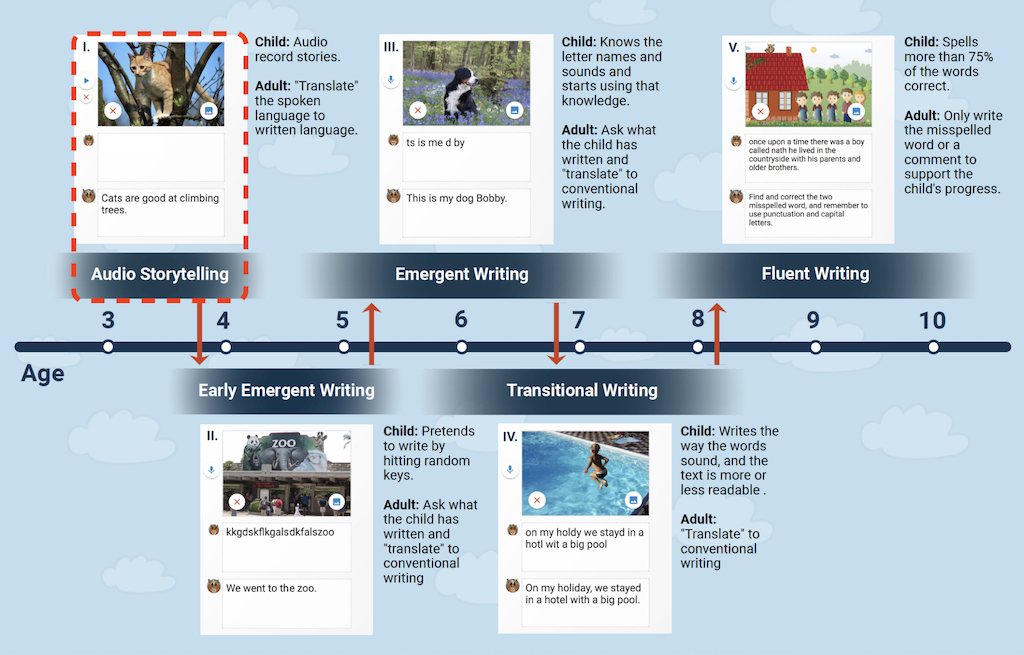
Audio and imagery storytelling
This stage is based on the spoken and imagery language, and gives young students the opportunity to tell stories by using the easy WriteReader recording and image import features.
Countless research shows that well-developed spoken language and vocabulary is one of the most important indicators for becoming proficient at writing and reading.
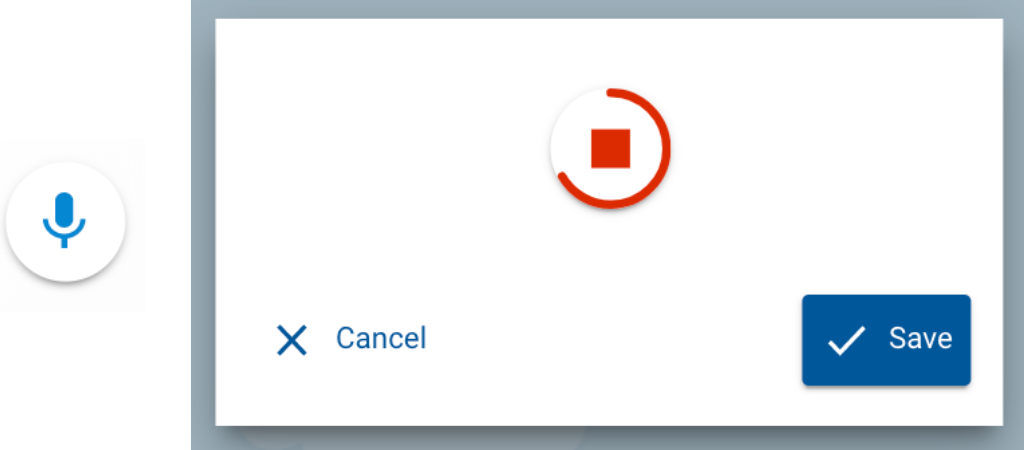
Imagery is also a very important and powerful part of communication and storytelling for this age group. The WriteReader image integration options support and make it easy for children to implement that powerful and inspirational element into their book creation.

Support suggestions
Parents and teachers should “translate” children’s audio recordings into written language by adding text to the adult text field. This gives children valuable insight into the purpose of writing, showing that the spoken language can be turned into symbols and characters that can be read and understood by other people. The combination of written and spoken language also shows differences between the two, like spaces between words.
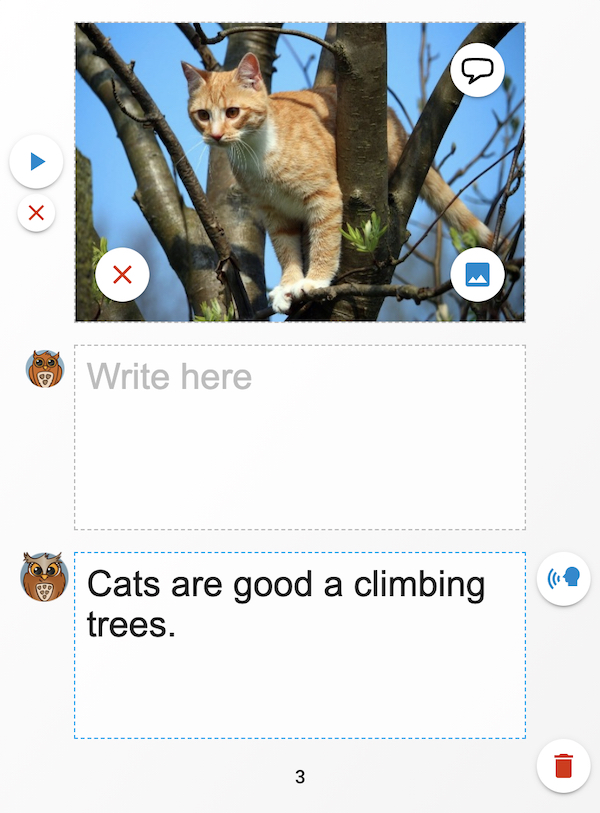
Children will often ask for support with specific words or elements of the written text (perhaps they can recognize their own names or the letter that their own names start with). This can open up a very important conversation about letter names and sounds, and the letters’ role as building blocks for the written language. If the child shows great interest in the writing part at this stage, a good activity could be letting the student transcribe a word or two from the teacher/parent text into the text field above.
As in all learning, it is very important to praise and acknowledge the students’ work. The WriteReader bookshelf makes it very easy to show and play the student created books to the other children in the classroom.
Remote ideas
In a remote learning setting, you can write your praise in the feedback feature. The built-in reading function allows the students to play and listen to your supportive comments over and over again.
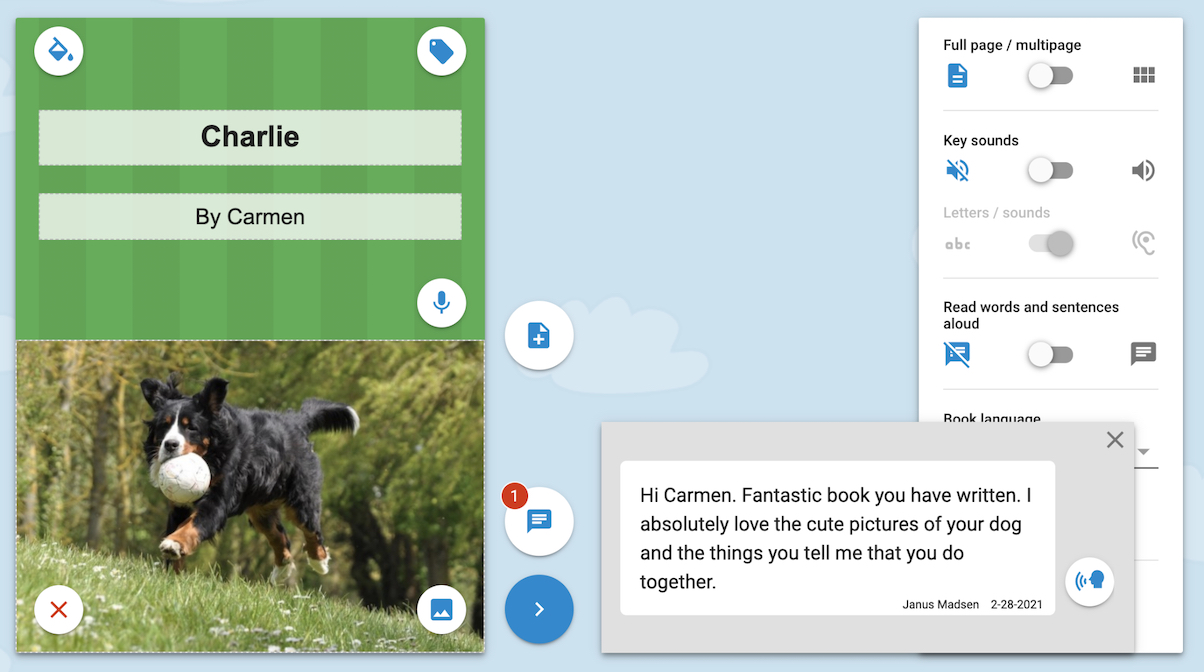
Creating a book link and sharing the child’s work with parents, grandparents and other family members creates the opportunity of more praise and encouragement for the student and allows them to publish to an authentic audience. Sharing books allows the children to see themselves as writers and appreciate the role of written language.
Focus on children’s interests and everyday life
At this stage, the most important piece of advice is to keep the focus on the children’s interests, knowledge and spontaneous ideas, because it is essential that students are engaged and motivated to write.
Children are different and have varied interests, but the suggested topics below may capture the interest of most children.
- My self/family
- My favorite toy/computer game/sport/movie/athlete/character
- My pet
- My trip/vacation
The WriteReader camera feature is valuable for the children to substantiate and document the everyday life topics, and for other topics the image bank categories and image search feature can be very helpful and even inspiring for the children’s story writing.
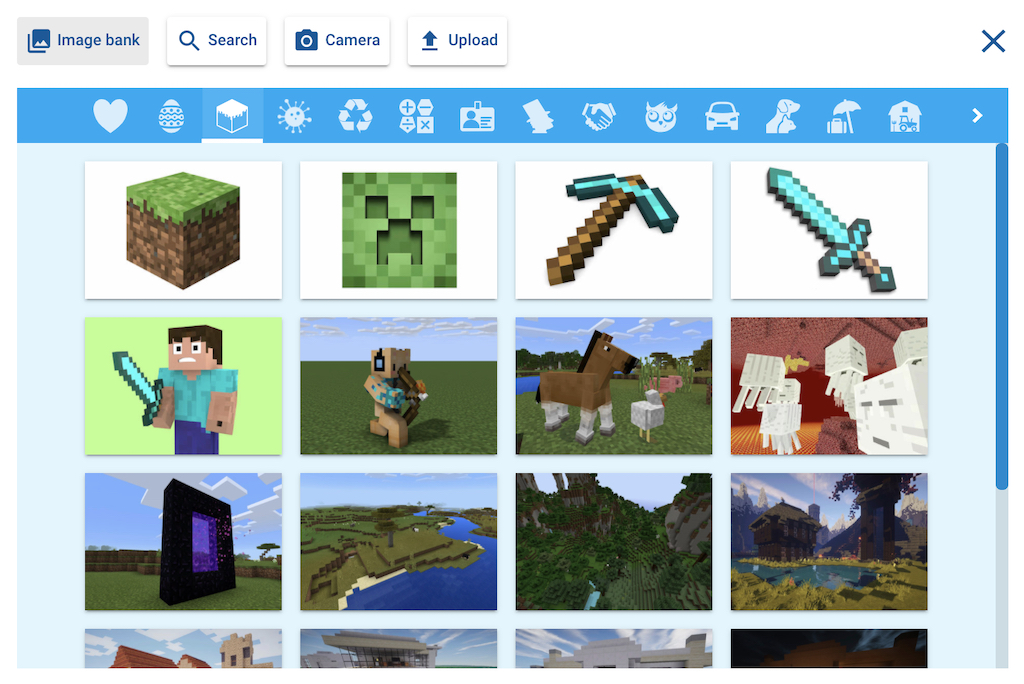
As a parent or teacher you can ask questions about the subject or plot in order to further develop the book, but it must be a principal rule to accept the child’s own ideas and structure to make the child feel personally attached to the story/book.
Keep an eye out for an upcoming blog post about the next writing stage, based on scribbling and logographic writing.
